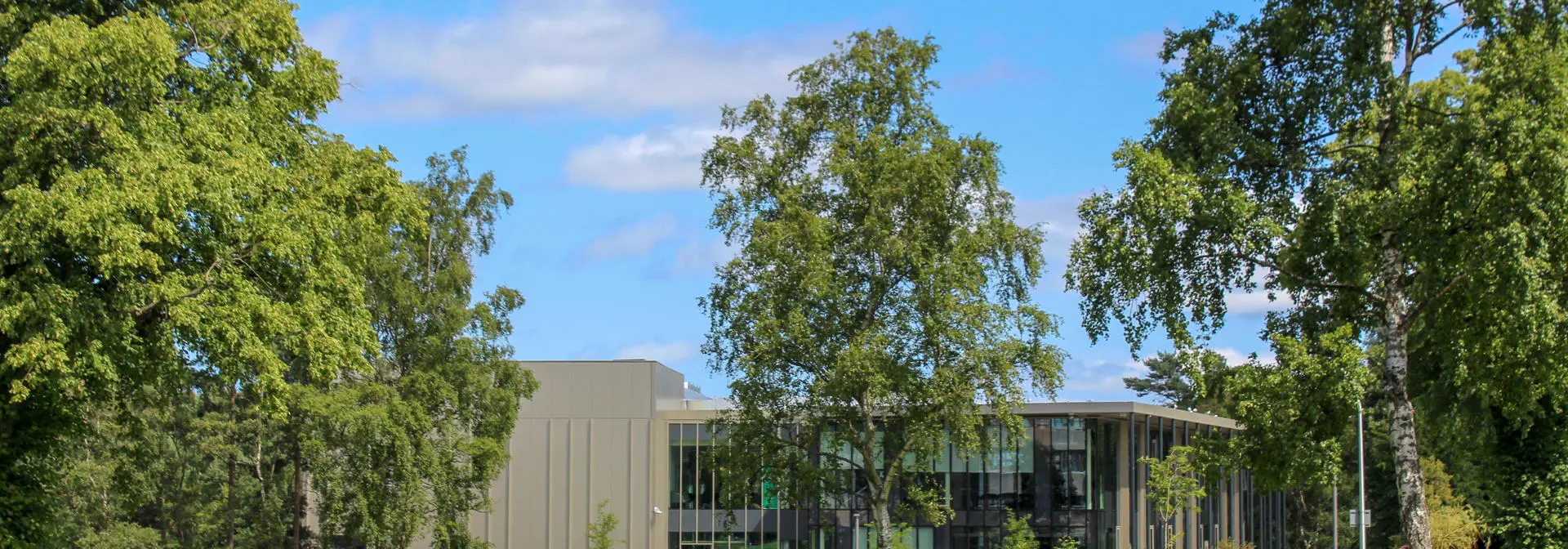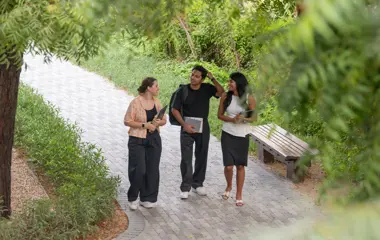Key information
- School
- Energy, Geoscience, Infrastructure and Society
- Location
- Edinburgh
- Delivery type
- Full-time, Part-time
- Start date
- September
Research into health and wellbeing in the built environment addresses the positive and negative effects from people-environment interactions. Understanding the role of the environment, particularly the built environment, and its effect on human health and wellbeing, can help to improve people's quality of life and provide a sustainable approach to the design and management of our environments. This type of research requires an interdisciplinary approach and the research team includes staff with backgrounds in environmental psychology, epidemiology, town planning, architecture, and community psychology. The group work with engineers, designers, and managers to explore the implications of designed and engineered environments on people's experiences and subsequent health and wellbeing.
There are six main themes to our research:
- Ageing-in-place and home;
- Environmental health effects;
- Healthcare environments;
- Restorative environments;
- Sensorial experiences;
- Urban nature.
Ageing-in-Place and Home
The home and community can directly support health and well-being, providing a setting where people feel a sense of security, independence and choice. Yet the ability to live at home may be compromised for vulnerable groups, for example older adults living with mobility or functional difficulties or those experiencing housing insecurity and are at-risk of becoming homeless. The built environment, through the design of housing and supportive community spaces, should reflect the desire to age-in-place through providing opportunities for social participation and community engagement. For example, housing that incorporates features of Universal Design, including aids and adaptations, enable older adults to complete activities of daily living and thereby supportive of autonomy and independence, obviating the need for institutional care.
Environmental Health Effects
Interests in the environment and health are long-standing. A major part of this work has concentrated on understanding the negative impact of pollutants in the environment, and the management of air, water, food, and soil to minimise risk to health. In addition, more recent research has started to unpick the way in which environments support health and wellbeing, by – for example – shaping patterns of physical activity and social interaction. As researchers we are interested in understanding both the negative and positive role that the environment can play in human health and wellbeing.
Healthcare Environments
Healthcare environments by their very nature should be places that facilitate people's health and wellbeing. However the design of these environments can hinder people's recovery, such as through noises disturbing sleep, poor lighting, and materials and systems harbouring bacteria. Staff absence rates and patient recovery times varies across regions and different working environments according to climatic variations and/or building design. Our research has included examining the impact of an Emergency Department physical environment on staff fatigue and stress.
Restorative Environments
Everyone needs the chance to recover from fatiguing tasks and reflect upon daily and life experiences. Some environments have been shown to be more restorative than others, such as good quality natural environments. Without access to restorative environments, people's stress levels can rise and general wellbeing suffers. Our research has included examining ways of measuring restorative environments (cortisol as a biomarker of stress, EEG brain activity, perceived restorativeness soundscape scale) and exploring the impact of specific environments (cafes, neighbourhood green space, staff-rooms, urban parks, water).
Sensorial Experiences
People experience environments through all their senses, thus how it is perceived and how the environment is designed is important in creating a healthy sensory experience. For example, aspects to consider include acoustic and thermal comfort, smooth surfaces for wheelchair users but textured surfaces for people with visual impairments. Sensory experiences can also enhance the enjoyment of a place, through play and encouraging further interaction, such as sensory gardens and art installations, all of which contribute to improved wellbeing. Our sensory research has included examining soundscapes, the use of participatory videos, and applied vision research as part of VisionCentre3 (mobility and falls in elderly, vision at altitude, light and circadian rhythms).
Urban Nature
Nature is an important part of the built environment, not only is it good for encouraging biodiversity, it can reduce urban flooding and high urban temperatures thus influencing people's health and wellbeing. Natural environments in cities can provide social spaces and enhance neighbourhood cohesion, provide attractive environments to encourage physical activities, as well as psychologically restorative environments. Specific research in this area has included exploring the impact of urban woodlands on people's quality of life in deprived communities.
Project supervisor
Staff contributing to this research area include:
- Dr Caroline J. Brown
- Dr Sarah Payne
- Dr Ryan Woolrych

Ryan Woolrych
Professor
Entry requirements
Candidate criteria
We welcome applications from suitably qualified candidates. Please visit our How to apply page.
Why Heriot-Watt
We're the top university in Scotland for graduate outcomes which means that more of our graduates are employed or in postgraduate education than any other institution in the country and we ranked 5th in the UK.
We're also rated number one in the UK for CEO or MD roles, meaning more of our graduates go on to become CEOs or MDs than any other university in the whole of the UK. On top of that, we have beautiful campuses, across the globe, so you'll get a truly international education. Our Edinburgh Campus is home to Oriam, Scotland's National Sports Performance Centre combined with plenty of wellbeing resources, prioritising fitness and mental health for all students. Our Global Research Institutes look at solving real world issues such as climate change and saving our oceans as well as working on the next medical technological breakthrough and the future of AI and robots.
Related content
Explore facilities, & chat to staff and students


